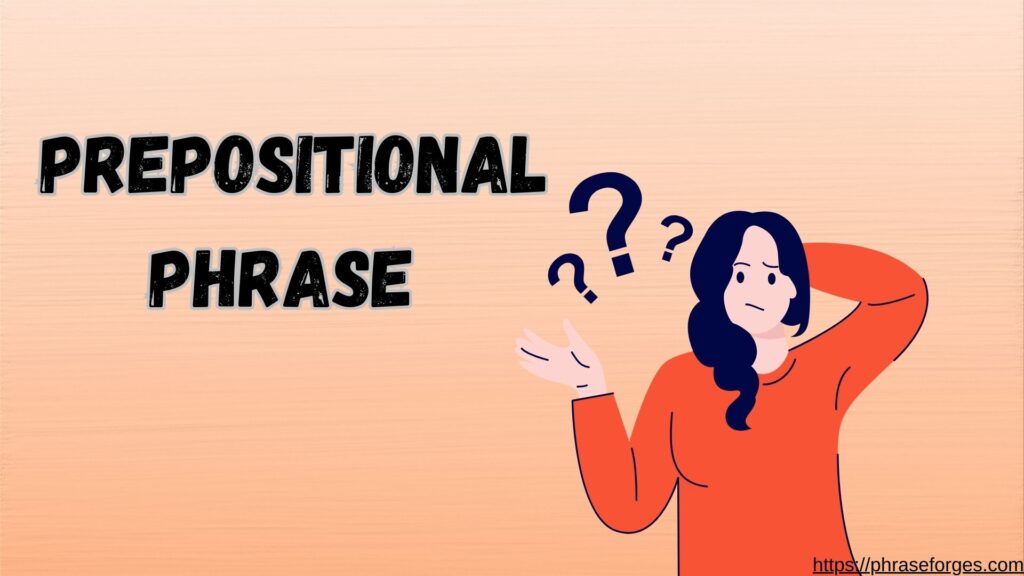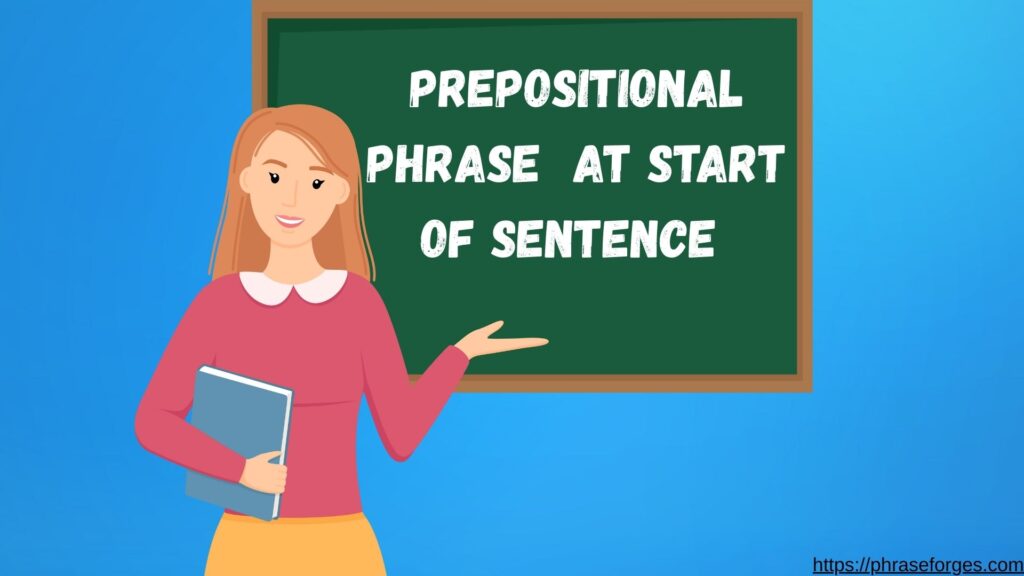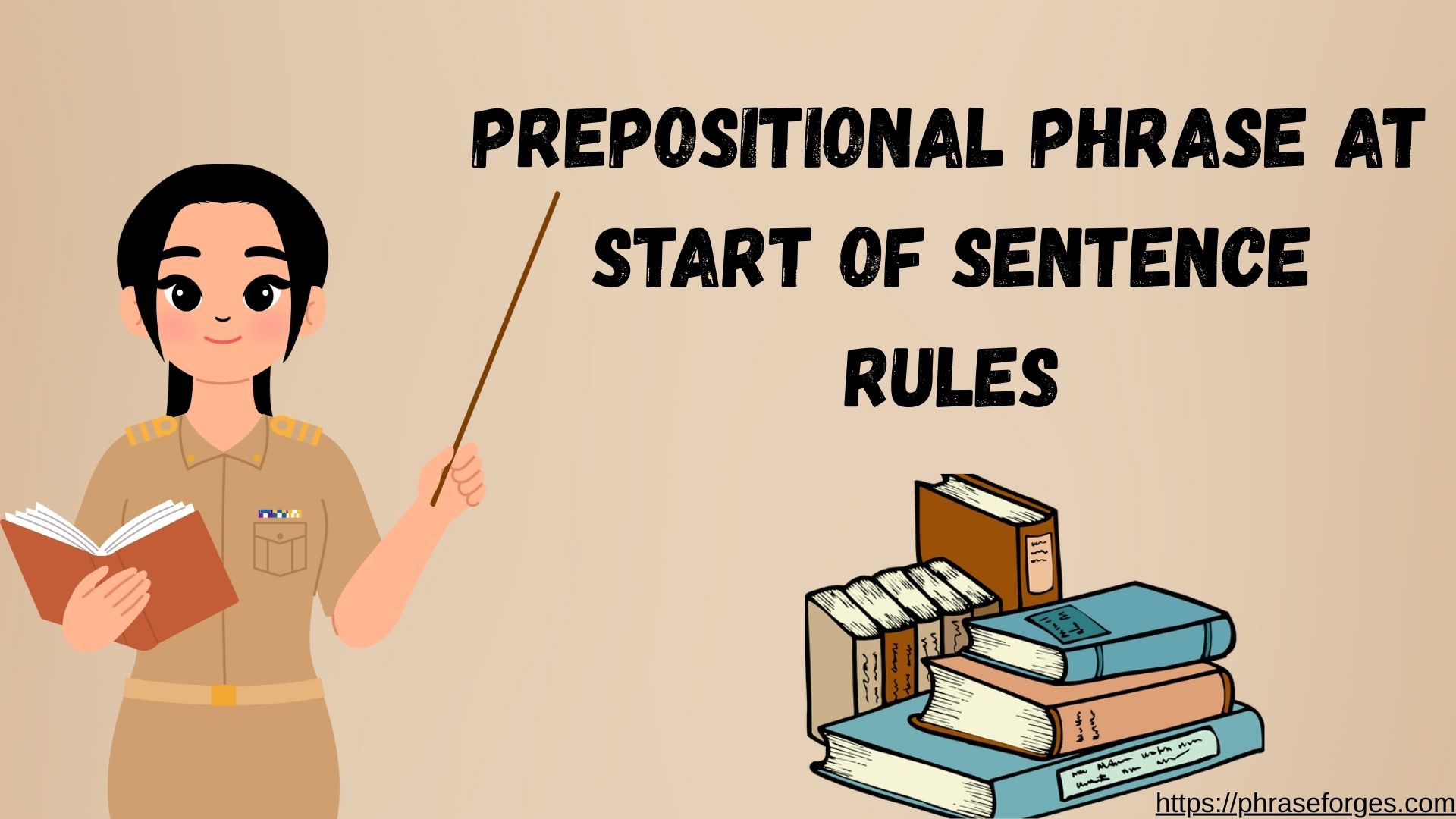When you’re trying to add style, flow, and emphasis to your writing, knowing how to place a prepositional phrase at the start of a sentence can make a huge difference. Whether you’re drafting an email to your boss or writing a short story, mastering this small grammatical twist adds polish and clarity to your writing.
Let’s explore when and how to start sentences with prepositional phrases, see real examples, highlight common errors, and provide a quick-reference guide you can bookmark for life.
Keyword + Intro Explanation

Let’s start with what you came here for: a breakdown of the phrase “prepositional phrase at start of sentence rules.”
In grammar, a prepositional phrase is a group of words that begins with a preposition (like in, on, after, under, before, with) and ends with a noun or pronoun. When you place this phrase at the beginning of a sentence, you’re not just adding detail you’re guiding the reader’s attention.
✅ Example:
After the meeting, Jessica grabbed coffee.
The phrase “after the meeting” is a prepositional phrase that sets the time, and starting with it adds rhythm and structure.
Simple Definition + Usage Overview
🔹 What is a Prepositional Phrase?
A prepositional phrase includes:
- A preposition (e.g., before, after, around, during, through)
- A noun or pronoun (known as the object of the preposition)
- Optional modifiers for clarity
🔹 Why Start a Sentence This Way?
Starting a sentence with a prepositional phrase helps:
- Add context or background (time, place, manner, cause)
- Improve the flow and tone
- Shift emphasis where it’s needed
✅ Example:
Before sunrise, the hikers reached the summit.
This gives your reader a time setting upfront, creating visual imagery before the main action.
Clear Rules & Patterns
Starting with a prepositional phrase isn’t just about style it has rules.
🧠 Basic Structure:
[Prepositional Phrase], [Main Clause]
➡️ In the morning, we reviewed the agenda.
➡️ Under the table, the cat slept soundly.
Important: When the prepositional phrase is long or used for emphasis, add a comma after it. But if it’s short and clear, the comma is optional.
Bulleted Rules with Do’s/Don’ts
Here are some easy-to-follow bullet points to keep you on track:
✅ Do’s
- ✅ Use a comma after the phrase if it’s longer than four words
- ✅ Use prepositional openings to show time, place, or condition
- ✅ Vary sentence beginnings to avoid repetitive structure
❌ Don’ts
- ❌ Don’t confuse prepositional phrases with subordinate clauses
- ❌ Don’t leave your subject too far from the main verb
- ❌ Don’t stack multiple prepositional phrases in a row without clarity
Multiple Example Sentences
Let’s dive into various sentence examples across scenarios and tones.
📧 Email Example:
After reviewing the proposal, I believe the budget needs revising.
🏫 Classroom Dialogue:
In the 18th century, philosophers debated this concept extensively.
💼 Business Memo:
During the onboarding process, each employee will receive a checklist.
Before/After Examples in Everyday and Formal Contexts
Here’s how sentence structure shifts depending on prepositional placement.
| Before | After |
|---|---|
| I found the keys in the drawer. | In the drawer, I found the keys. |
| We discussed the strategy after the meeting. | After the meeting, we discussed the strategy. |
| The answers are written on the last page. | On the last page, the answers are written. |
Placing the phrase at the start adds emphasis and helps create narrative flow especially in storytelling or formal communication.
Common Mistakes & Fixes

Now let’s highlight confusion points and correct usage. This is where writers often slip up:
❌ Mistake 1: Missing Comma After Long Intro Phrase
During the last quarterly business review we identified performance gaps.
✔️ Fix: During the last quarterly business review, we identified performance gaps.
❌ Mistake 2: Subject Confusion
After watching the movie, the book was more enjoyable.
(This suggests the book watched the movie.)
✔️ Fix: After watching the movie, I found the book more enjoyable.
❌ Mistake 3: Dangling Phrase
On arriving at the airport, my phone died.
(Again, this suggests the phone arrived.)
✔️ Fix: On arriving at the airport, I realized my phone had died.
Quick Reference Table
Here’s your go-to summary table for easy quick lookup:
| Rule | Example | Comma Needed? |
|---|---|---|
| Short phrase (≤4 words) | In July we travel. | Optional |
| Long phrase (>4 words) | At the end of the year, we reflect. | Yes |
| Emphasis required | Under no circumstances, should you skip training. | Yes |
| Avoid subject confusion | After baking the cookies, Sarah let them cool. | Yes |
| Don’t dangle phrase | Before attending the lecture, I read the notes. | Yes |
Real-World Scenario Application
✉️ Email to a Client (Name: Mr. Daniels):
Subject: Q2 Review Follow-up
Dear Mr. Daniels,
During our Q2 review, we noticed a consistent uptick in engagement metrics, especially on Tuesdays and Thursdays.
With that insight in mind, we plan to revise the posting schedule to maximize visibility.
Please let us know your availability next week.
Best regards,
Monica Hayes
See how prepositional phrases help structure the email with professional tone and clarity?
Why It Matters in Writing
Using prepositional phrases to open your sentences is like seasoning a dish it’s not mandatory, but it elevates everything. Whether you’re:
- Writing fiction (On a cold winter night, the wolves howled.)
- Drafting reports (By the end of Q4, revenue had stabilized.)
- Sending polite emails (After your last message, I reviewed the file.)
…it adds clarity, tone, and pace.
Final Thoughts
Mastering the art of placing a prepositional phrase at the start of a sentence helps you avoid robotic repetition and makes your writing flow like a conversation. Use it to guide your reader, emphasize important details, or add rhythm and structure to your tone.
Remember:
- Keep it clear.
- Mind your commas.
- Watch for confusion.
- And vary your sentence patterns.
This tiny tweak in sentence structure offers big returns in clarity, tone, and readability no matter what you’re writing.

